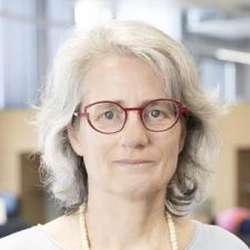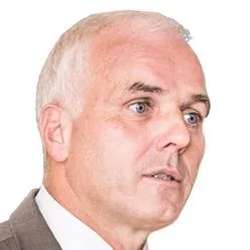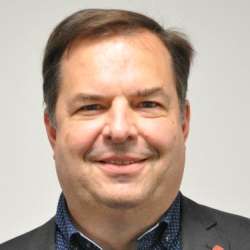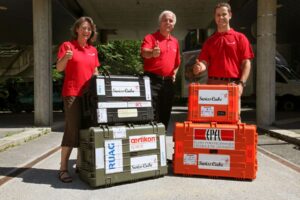After 15 years of flight, SwissCube is now the third-longest serving CubeSat
On the 26th September, 2009 a rocket from the Satish Dhawan Space Centre, India released its payload into orbit, including the first Swiss satellite: SwissCube. Not that anyone could have known this at the time, but a lot of extremely successful careers were also launched that day: from CEOs of Swiss Tech companies to the Chair of the European Space Agency council.
SwissCube is a CubeSat, a class of satellite that is cube-shaped and 10cm along each side. Sent on a mission that it was hoped would last three months, SwissCube is still sending telemetry to this day, fifteen years later. Only two CubeSats older than SwissCube (Xi-IV Oscar 57 and Xi-V Oscar 58) are still sending telemetry, making SwissCube the 3rd oldest out of the 2,400 CubeSats launched since 2003.
But is has not been plain sailing. SwissCube has survived several Hollywood-style adventures: an out-of-control spin (like in First Man), navigation through a field of debris (as in Gravity), a prolonged loss of communications (as in The Martian), improvised repair (as in Apollo 13). It is a miracle it is still alive – and a testament to great engineering: not only in the initial build, but also in post-launch ingenuity.
Muriel Richard-Noca had been working at NASA’s Jet Propulsion Laboratory on the Jupiter Icy Moon Orbiter, a $350 million, 40-ton project, when Dr. Maurice Borgeaud convinced her to come to work for Swiss Space EPFL, in 2005. The result was that she would go on to work on an 800g satellite, with a budget of CHF100,000.
Dr. Anton Ivanov had also made the transition from the Jet Propulsion Laboratory to eSpace, and well remembers the awesome task: “People forget that in 2009 the success rate of small satellites was around 30%. This was an exciting challenge!”
The launch, however, was indeed successful. Then Director of the Space Center EPFL, Dr. Maurice Borgeaud remembers the moment: “We had the first confirmation from California, about 45 minutes after separation from the launch vessel. I immediately called Patrick Aebischer (then EPFL President), who was on the train for a meeting in Bern. That was a fantastic day, a crowning moment after four years of work at EPFL with students and industry!”
However, there was a problem. According to Mme. Richard-Noca it might have been a matter of friction: “It may have been that one rail of the launch vehicle was rubbing more than the other, but the result was that the satellite entered its orbit tumbling. It was spinning too fast to get a lock.”
As if this was not bad enough, a warning came in from the United States Joint Space Operations Center that a collision between the active commercial satellite Iridium 33, and the derelict Russian military orbiter Kosmos 2251, had left a field of debris, and SwissCube was headed straight for it! Luckily, SwissCube spun its way through, and there was no collision this time.
Nevertheless, the spinning continued, and prevented any instructions from reaching the satellite, nor was any telemetry being received. Patience was necessary: predictions showed that the spinning would slow down over time, and this proved to be the case.
However, systems were saturated and it was not possible to receive telemetry. In particular, images of the “airglow” phenomenon were highly anticipated – faint emissions of light from the planetary atmosphere.
It was agreed that a system restart might flush memory banks and allow for normal operations to begin but, as a security precaution, no hard reset command had been included in the Flight Software. “That could have compromised the security of the entire mission,” explains Mme. Richard-Noca.
The Flight Software had been designed by students, so they were the experts to be consulted in this emergency. Florian George had made steady progress in his education, from CIFOM technical college in le Locle to the Haute-école Arc, to Neuchâtel University. Dr. Borgeaud had found him a six-month placement at the European Space Agency in the Netherlands, during which he and Benoît Cosandier had developed the mission control software for SwissCube.
“There was a possibility to force the system to restart,” explains Florian, “because if the batteries were drained below 20% there would be an emergency reboot. So, we powered on all of the systems, disabled several safety measures that had been put in place to prevent that, started using as much as energy as possible, and waited. There was then a moment of great suspense: this action could have created other problems! We just had to wait for SwissCube to come round on its next orbit. And hope.”
Dr. Ivanov remembers that there was a meeting in March 2011 where the mission was to be appraised. When all of the systems came back online, following the successful reboot procedure, he could bring to this meeting the first image of the airglow phenomenon, captured and sent by SwissCube:

“It was great! We had a real sense of validation, thanks to the ingenuity of our students. We had the picture!”
The main mission of SwissCube was now complete: it had been shown that teams of students at EPFL, the University of Neuchâtel, HES-SO, FHNW, and others were able to design and maintain a working satellite. However, the longevity of the satellite since then has always depended on the work of volunteers. That we still receive telemetry today is thanks to amateur radio enthusiast Armin Rœsch (HB9MFL) and engineer Yann Voumard, who work together to ensure that the telemetry of SwissCube (HB9EG/1) is broadcast to the space community every month.
The most recent adventure for SwissCube came in 2022, when communications stopped. Preparations were made to announce the end of a great mission, but it turned out that the break in communications was due a faulty cable in the ground station. After a quick repair, telemetry transmission resumed.
How has the mission lasted so long? Armin explains: “The Attitude Determination and Control System was really well conceived. Also: whoever designed the batteries and the battery management system did a great job.”
This is confirmed by Prof. Volker Gass, then on the Steering Committee of the Space Center: “We knew that many CubeSats suffered from battery problems. We sent our students to industry to encase our battery in a monolithic aluminum housing that we had had machined, in Vaud. We slim fit the battery in that solid structure, so that it would not be able to expand, and degrade. Then we installed two batteries, so that even today there is ‘cold redundance’.
“We also put in place a high-quality soldering technique, particularly for the solar cells. All of this was well checked, with shaking and vibration tests.”
The result is fifteen years of mission so far, with potentially many more to come.
However, perhaps more importantly, SwissCube has paved the way for many amazing careers. Over 200 students and senior researchers contributed to the SwissCube project. Of those mentioned above:

Florian George is Embedded Software Team Leader at Astrocast, founded by Fabien Jordan, the Chief Executive Officer

Benoît Cosandier is Head of Ground Segment at Astrocast

Yann Voumard is Chief Operations Officer at Solenix, a software engineering and consulting company serving satellite operators.

Dr. Renato Krpoun, one of the initiators of SwissCube, is Chair of the European Space Agency council, and Head of the Swiss Space Office.

Muriel Richard-Noca first experienced the hazards of space debris with SwissCube, and credits this experience as the genesis of ClearSpace-1, planned to launch in the next couple of years. She is Co-Founder of ClearSpace S.A.

Dr. Anton Ivanov went on to become Director of the Space Center at SkolTech, and is now Director of the new Propulsion and Space Research Center at TII Abu Dhabi.

Dr. Borgeaud went on to become Head of Department for Science, Applications, and Climate Activities in ESA’s Earth Observation.

Prof. Volker Gass is Director of Strategic Initiatives at EPFL.
“EPFL took a lead with SwissCube,” says Dr. Borgeaud. “We were in the vanguard of Swiss space science. And we went on to start the Minor in Space Science. Now ETHZ have taken the initiative, with a new Master in Space Science. We need to maintain the momentum we gained with SwissCube.”
It seems incredible that an 800g, 10cm3 box could have achieved so much. However, while there have been many CubeSats, this one has outlasted almost all of them, having benefited from a particular brand of Swiss ingenuity and precision.






